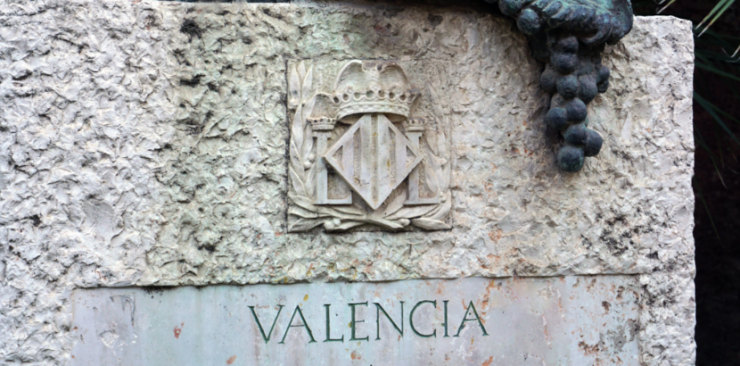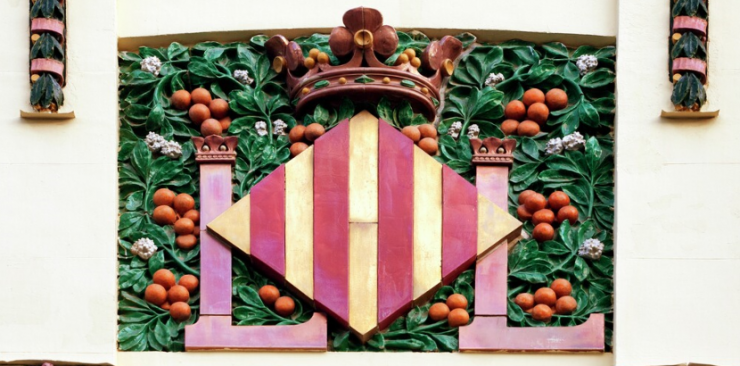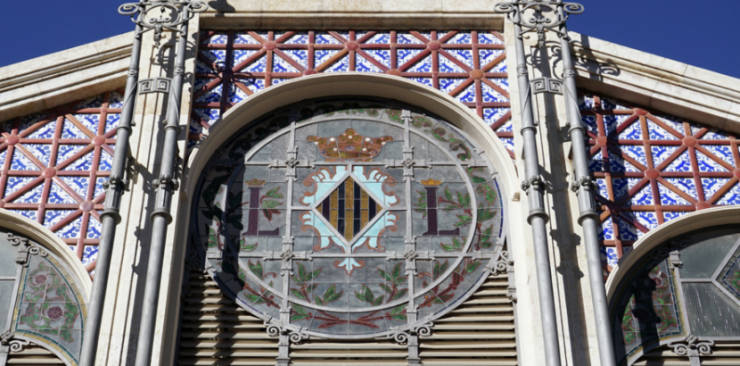Valencia’s coat of arms: History engraved in heraldy
Among two-millennia-old Valencia’s identifying symbols is its coat of arms. The shield hints at a series of historical vicissitudes, many related to conquests and battles, which have moulded the character of the city and are reflected in its most notable symbol, evidence of past times engraved in heraldry.
The coat of arms we know did not always look the way it does today. The first emblem of Roman Valentia, before its founding by veteran legionaries of the Lusitania campaigns, was a horn of plenty surrounded by lightning bolts. Later, until well into the 14th century, the symbol was a walled city amid waves, a reference to the proximity of the Mediterranean Sea.
Today, it is made up of a rhomboid shape (a ‘lozenge’ in heraldic terminology) with four gules (dark red) pales on a gold field. These elements were initially taken from the royal emblem of Aragón, official ensign of the kingdom, by the members of the Municipal Council in 1377, after it was decided to adopt the king’s arms.
King Pedro IV the Ceremonious granted the favour of adding new ensigns to honour the bravery of Valencia in the conflict known as the War of the Two Pedros (dispute between Castile and Aragón from 1356 to 1369). Thus, the crest was topped with the royal crown and two letter Ls were added at the bottom, in reference to the two occasions on which the city remained ‘loyal’ when under siege.
The bat at the very top of the coat of arms may have originally been the viper or dragon used by some cities in the Crown of Aragón. It was made official in the 17th century. Regardless of how it came about, the bat is now commonly associated with Valencia as its animal insignia. In part, this comes from an ancient legend that attributes to this animal the virtue of alerting the hosts of Jaume I the Conqueror, at rest in their camps, to a surprise attack by the Muslim army.
The laurel branches surrounding the crest were granted much later by Fernando VII, as a tribute to Valencia's resistance against the Napoleonic troops of General Bon Adrien Jeannott de Moncey. The city was not taken, and another milestone in military glory was reflected on the municipal coat of arms.
Where to find the arms
The crest is part of Valencia's image and proudly symbolises the personality of the city, demonstrated over its more than two millennia of existence. It can therefore be found on numerous buildings and in iconic locations, including on the façades of the Silk Exchange, Norte Station, Colón Market and the City Hall Building; in the stained glass windows of Central Market; on the cupola of the Correos Building; in the railings of the Quart Towers; at the base of the Statue of Jaume I in El Parterre Gardens; sculpted in flowers in Turia Gardens near the Palau de la Música concert hall; and even on the sewer system manhole covers!
Where can I find the shield?

in the Central Market

in the Town Hall building

in the sewer covers of the city

in the Parterre

at the North Station

in the sewer covers of the city

at the Post Office building

in the Quart Towers

at the North Station

on the street lamps of the city

at the Lonja de la Seda (Silk Exchange)

at the Quart Towers

in the Plaza de la Virgen





